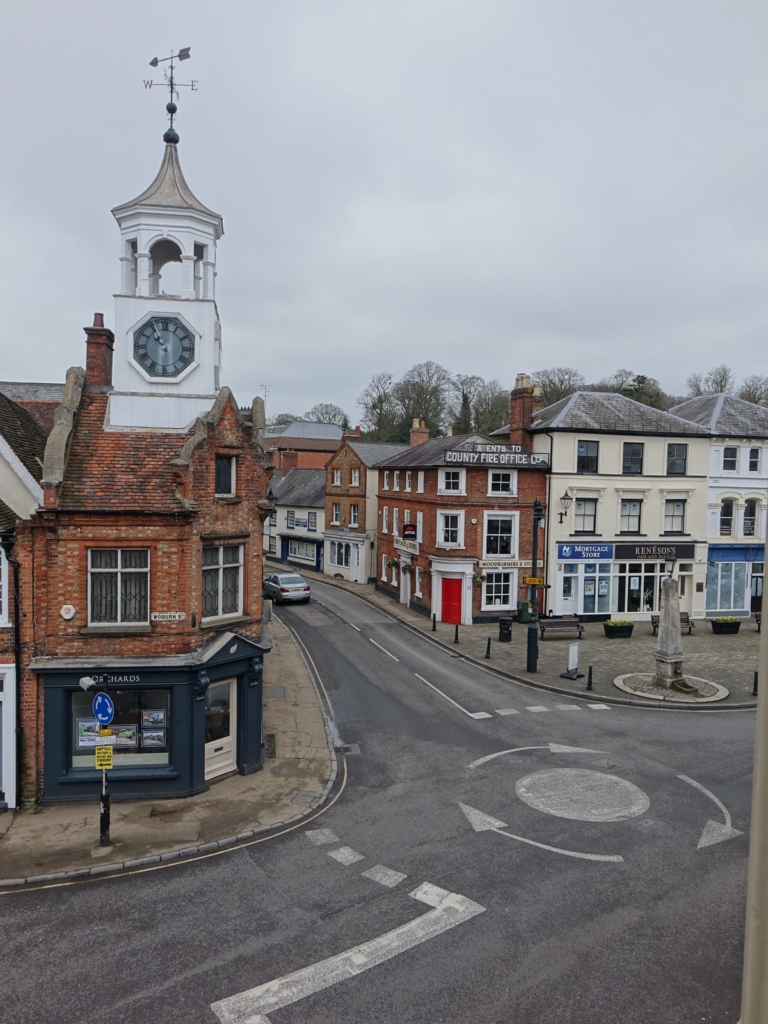 On a recent trip to England, our son took us to visit historic Warwick, an enclosed city. The highlight of the afternoon for me was going for a proper English cream tea at the Oken Tea Rooms.
On a recent trip to England, our son took us to visit historic Warwick, an enclosed city. The highlight of the afternoon for me was going for a proper English cream tea at the Oken Tea Rooms.
The Tea room is actually several quirky rooms of the 500 year old house where the wealthy merchant and former mayor, Thomas Oken, once lived near the Warwick Castle. The house of yesteryear is enchanting for its’ old world charm.
The walls of the half-gabled house slanted and the roof sagged, looking like a picture in a fairytale. When we walked into the reception area by the till, sacks of 30 different loose leaf teas - jasmine, lemon grass, mango, Japanese cherry and others - could be purchased along with other sweet treats like caramelized clotted cream nuggets.
The waitresses, donning aprons over casual slacks, shorts and T-shirts, bustled about  looking like they stepped out of the back kitchen where they baked homemade cakes and scones. Patrons spilled out of the ground floor tea rooms, so our waitress led us up a rickety, winding, ancient staircase that made me feel like I stepped into the old nursery rhyme.
looking like they stepped out of the back kitchen where they baked homemade cakes and scones. Patrons spilled out of the ground floor tea rooms, so our waitress led us up a rickety, winding, ancient staircase that made me feel like I stepped into the old nursery rhyme.
“There was a crooked man…He bought a crooked cat, which caught a crooked mouse,
And they all liv'd together in a little crooked house.”
We ducked under the doorway and stepped into the past of what looked like a parlor from the eighteen hundreds. Stuffed sofas and antique chairs surrounded wooden tables where families whiled away time sipping tea.
 We squeezed around a low table designed for short-statured folks of earlier times. We folded our long legs; our knees knocked into the furniture.
We squeezed around a low table designed for short-statured folks of earlier times. We folded our long legs; our knees knocked into the furniture.
The tea was served on crockery that looked like it came straight out of great granny’s china cabinet. The tea, served in individual pots, included a strainer to separate the tea leaves. Fist-sized, fluffy, light scones balanced on trays alongside ceramic bowls, one laden with strawberry jam and thick, clotted cream in the other.
One bite of a cream topped scone was bliss.
Hungrier visitors could enjoy a full lunch or dinner or you could make a meal out of Tea for Three option, presented on a cake trolley, with a tiered glass plate towering with scones, cakes and finger sandwiches cut in triangles.
The only thing missing from our traditional tea was our lovely British daughter-in-law. I wished she had been with us to explain the difference between low tea and high tea. She’d probably say what any British person would tell you, anytime is a good for “a cuppa.”



 On the square across from the clock tower, the Queen Anne style White Hart, built on a Tudor foundation, remains the soul of the Georgian market town dating back to the 11th century. The hotel’s name, Hart, a term for stag used in medieval times, represented the most prestigious form of hunting. Royalty from London tracked these animals in the woods around Ampthill, a day’s carriage ride from the city.
On the square across from the clock tower, the Queen Anne style White Hart, built on a Tudor foundation, remains the soul of the Georgian market town dating back to the 11th century. The hotel’s name, Hart, a term for stag used in medieval times, represented the most prestigious form of hunting. Royalty from London tracked these animals in the woods around Ampthill, a day’s carriage ride from the city. The hotel, which over time withstood raids, conflicts and fires, has been restored in the style of an old coaching inn. The front door opens to the bar where cozy tables fill nooks like in a traditional pub, while the back rooms serve as dining areas. The former stables, now a dining hall, accommodate groups for banquets and receptions.
The hotel, which over time withstood raids, conflicts and fires, has been restored in the style of an old coaching inn. The front door opens to the bar where cozy tables fill nooks like in a traditional pub, while the back rooms serve as dining areas. The former stables, now a dining hall, accommodate groups for banquets and receptions.














